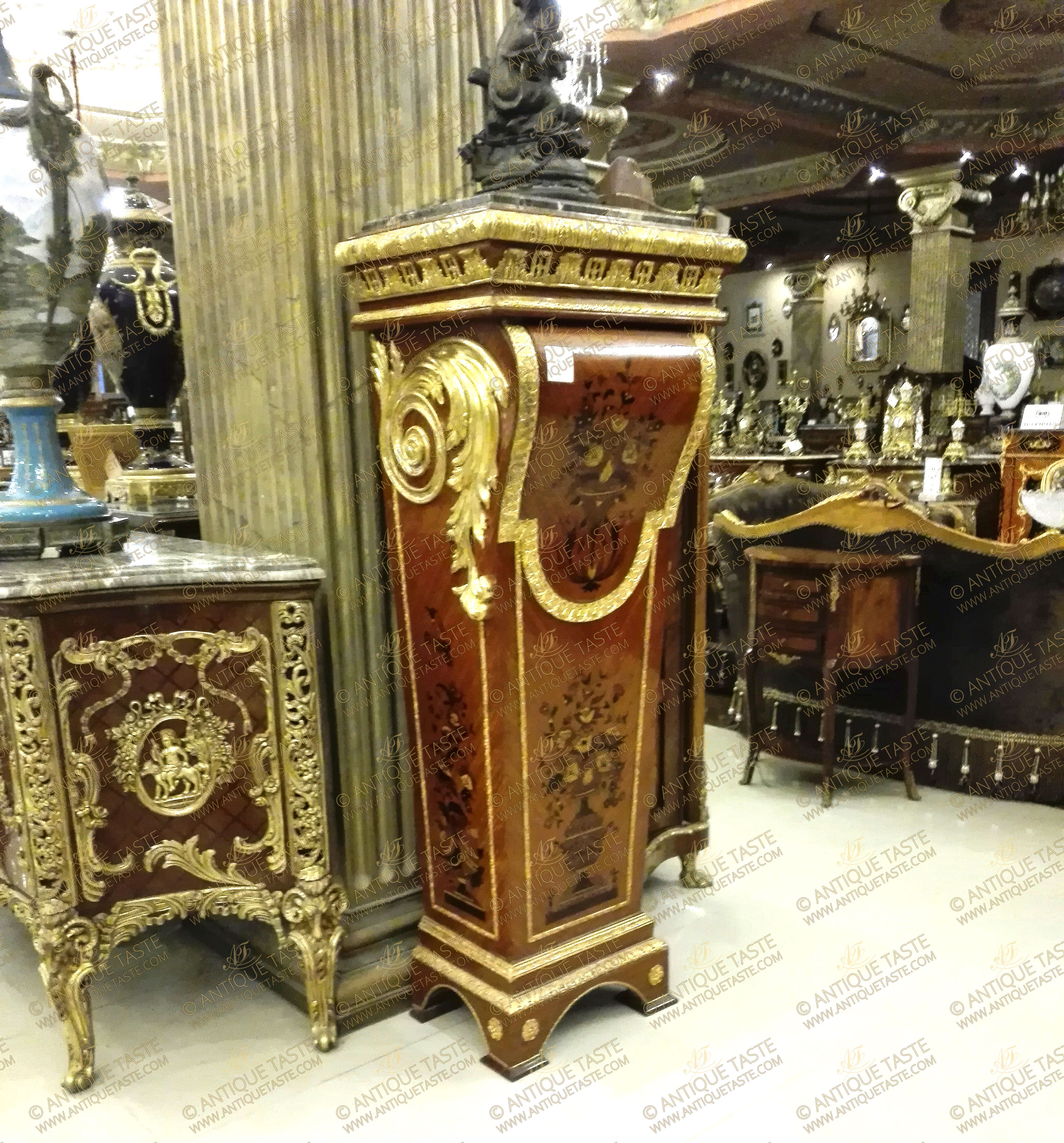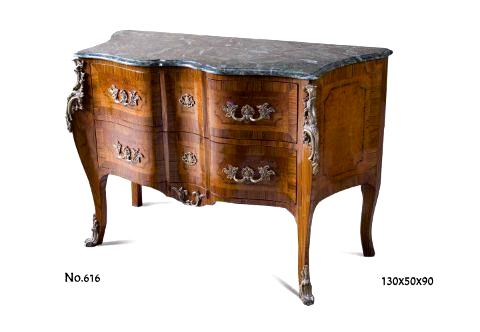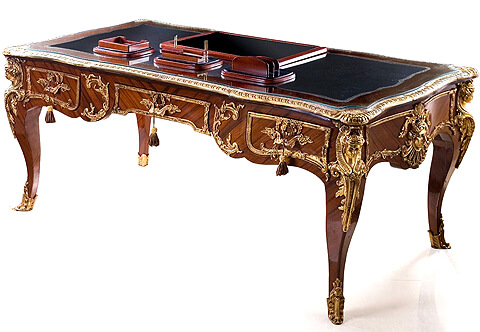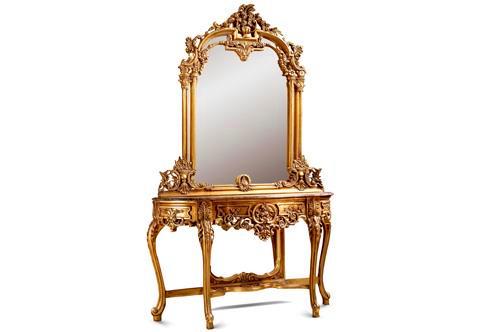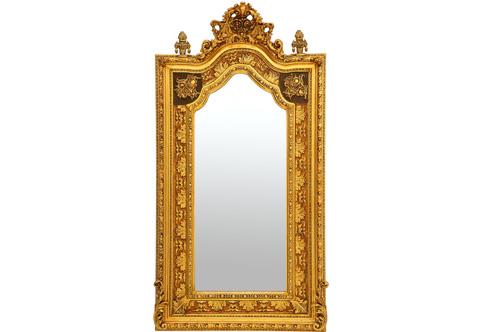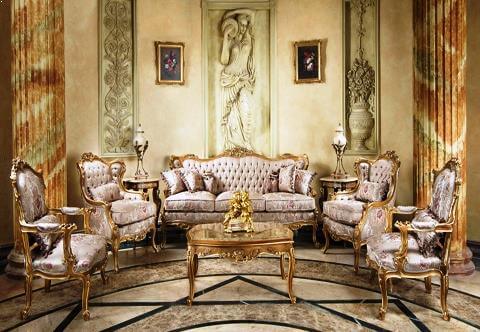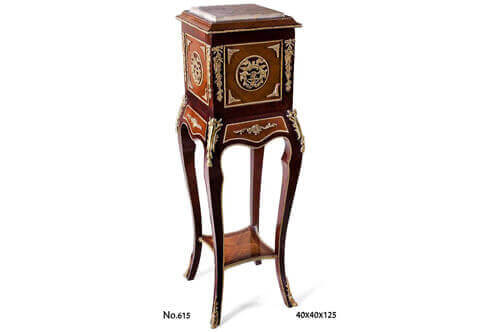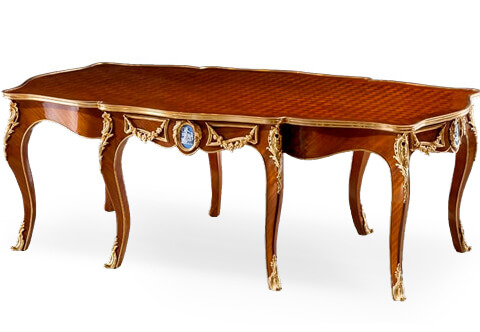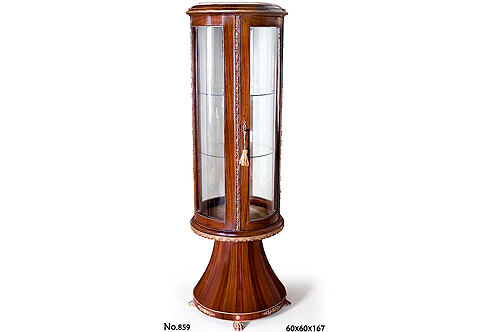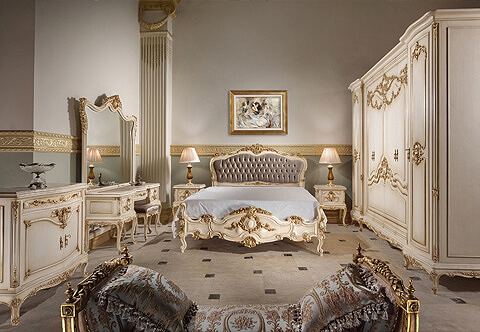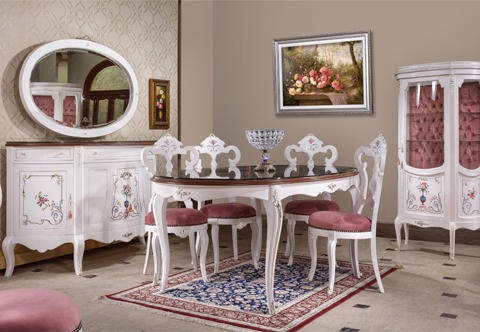French Louis XIV style ormolu-mounted marquetry and veneer inlaid grand Gaines À Tablier Scabellon Pedestal Stand inspired of the model by André Charles Boulle, 17th Century
Ref#ST-31-P | Description
A resplendent French Louis XIV ormolu-mounted veneer and marquetry inlaid grand majestic Gaines À Tablier Scabellon Pedestal Stand inspired of the model by André Charles Boulle, 17th Century
Surmounted by a rectangular stepped marble top above three different stunning richly chased ormolu bands surrounding the top part; the tapered shaped pedestal is distinguished with its scrolled lambrequin or the fringed apron to the front with the large ormolu filet and the sides with bold large acanthus leaf scrolls; the body is inlaid in sans traverse veneer and marquetry pattern designs of flower bouquet and flowering vase as displayed within an ormolu frame and raised on a shaped rectangular plinth ornamented with different decorative ormolu bands and ormolu rosettes; different styles of marquetry patterns were applied earlier to this gigantic size pedestal.
The original pedestal model was black lacquered and in Boulle style marquetry and the Royal Collection states that the design for this model appears on the engraved title page of Jean Mariette's Nouveaux Deisseins ... Inventés et gravés par André-Charles Boulle, published after 1707 and before c.1720; and from the evidence of Boulle's workshop records and eighteenth-century sale catalogues, it never entirely fell out of fashion. Mariette's engraving shows pedestals lined up against pilasters along the side of a room, supporting pairs of vases, and their continuing popularity was no doubt due to their adaptable, semi-architectural function. They could equally well be used for busts, bronzes or candelabra. A number of later eighteenth-century versions also exist, some stamped by makers such as E. Levasseur or N.-P. Séverin who specialized in the manufacture and repair of Boulle furniture.
Ref#ST-31-P
H:150 x W:48 x D:43cm
Louis XIV Style | Gaines À Tablier | André Charles Boulle
André-Charles Boulle
André-Charles Boulle (1642–1732) was one of the first cabinetmakers to make effective use of gilt-bronze mounts, and considered to be the preeminent artist in the field of marquetry, even "the most remarkable of all French cabinetmakers by his contemporaries as "the most skillful artisan in Paris;
André-Charles Boulle's name is synonymous with the practice of veneering furniture with marquetry of tortoiseshell, pewter, and brass. Although he did not invent the technique, Boulle was its greatest practitioner and lent his name to its common name: boulle work. Boulle also specialized in floral marquetry in both stained and naturally colored wood. Many of his designs are illustrated in a book of engravings published around 1720.

